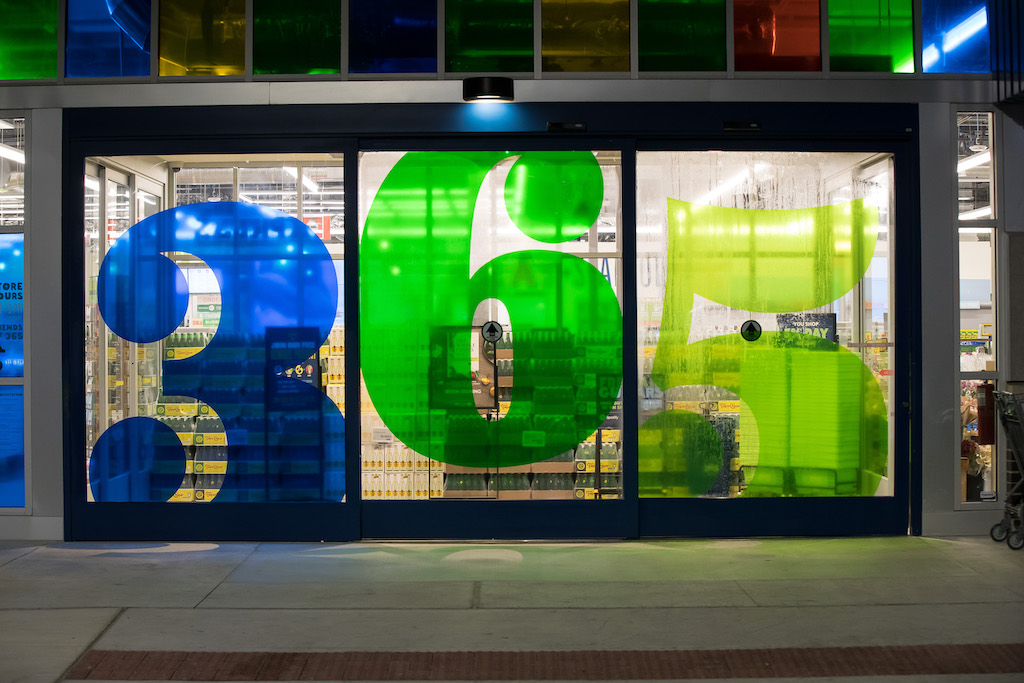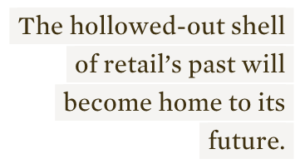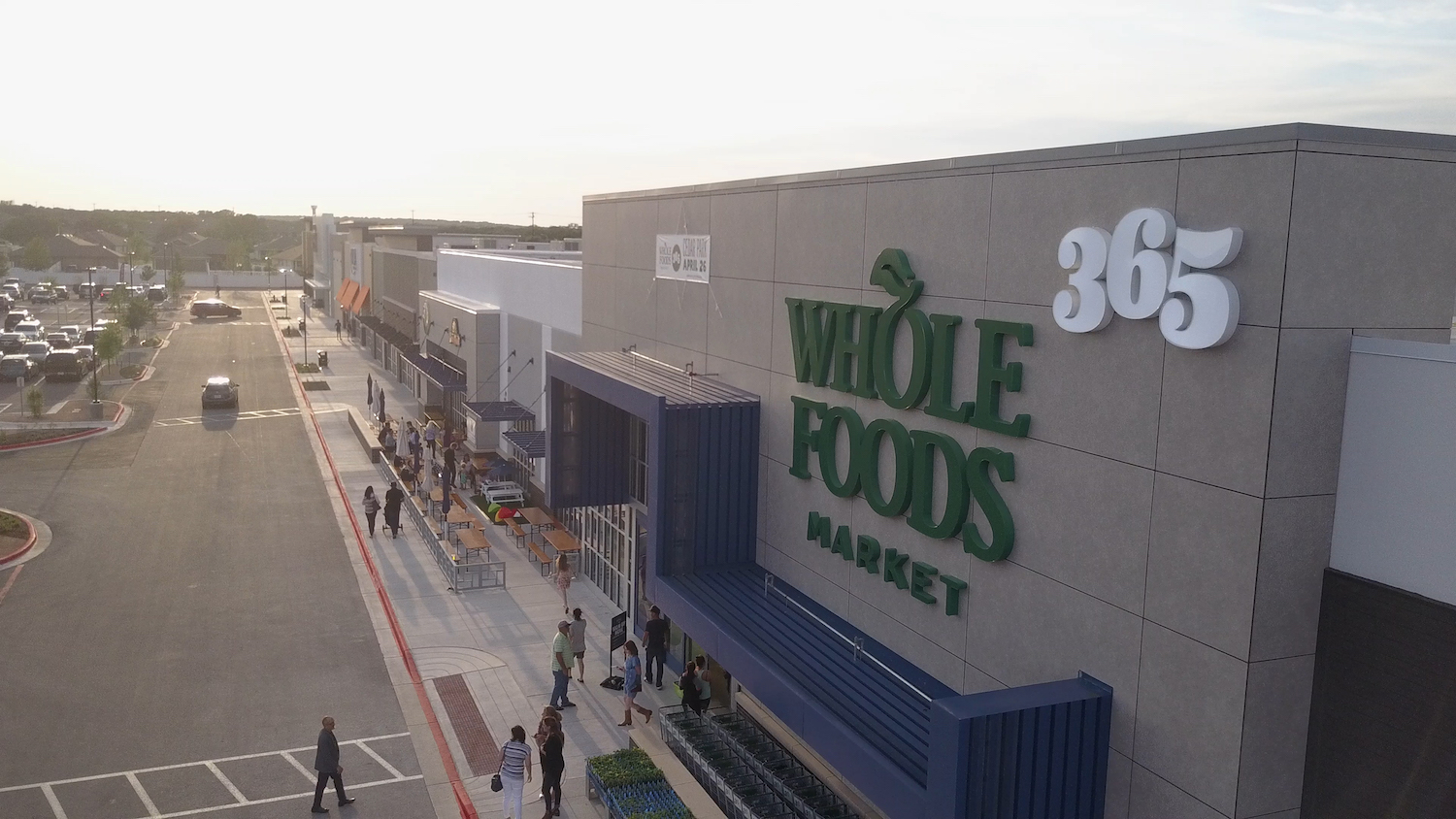New Food Economy: With the end of 365 stores, Whole Foods cements its future as Amazon’s house brand
As it moves away from its focus on small suppliers, Whole Foods is increasingly becoming one itself—for Amazon.
by Joe Fassler | January 15th, 2019
On Friday, Yahoo Finance reported that Whole Foods Market won’t open any more 365 stores—the smaller-format, budget-friendlier markets it had once said would be the key to its expansion.
According to an internal memo obtained by Yahoo, Whole Foods CEO John Mackey said that the company would discontinue the concept, while keeping the 12 existing 365 stores open. His reasoning? The 365 concept is no longer all that different from standard Whole Foods stores.
“As we have been consistently lowering prices in our core Whole Foods Market stores over the past year, the price distinction between the two brands has become less relevant,” Mackey wrote. “As the company continues to focus on lowering prices over time, we believe that the price gap will further diminish.”
Whole Foods did not respond to my request for comment by press time.
 The first 365 store opened in May of 2016, in Los Angeles’s Silver Lake neighborhood. The idea was to create a streamlined store similar to Trader Joe’s: smaller and cheaper than a standard Whole Foods, with lots of private-label goods. In theory, the scaled-down format was supposed to make it easier for the store to grow quickly, as well as—also in theory—squeezing the Whole Foods brand into dense urban neighborhoods where 50,000-square-foot locations were geographically impossible.
The first 365 store opened in May of 2016, in Los Angeles’s Silver Lake neighborhood. The idea was to create a streamlined store similar to Trader Joe’s: smaller and cheaper than a standard Whole Foods, with lots of private-label goods. In theory, the scaled-down format was supposed to make it easier for the store to grow quickly, as well as—also in theory—squeezing the Whole Foods brand into dense urban neighborhoods where 50,000-square-foot locations were geographically impossible.
“Designed to complement the Whole Foods Market brand by bringing fresh, healthy food to a broader audience with a streamlined, quality-meets-value shopping experience, 365 by Whole Foods Market stores will feature a curated mix of products that adhere to the company’s industry-leading quality standards in an environment that’s fun and convenient for shoppers,” the company wrote in a 2015 press release.
But in 2017, Whole Foods was acquired by Amazon. And Amazon, it turns out, had other plans.
The first step in Amazon’s shock-and-awe campaign to reinvent Whole Foods, announced just days before the final acquisition deal closed, was moving to quell the company’s famously high prices. The first sentence of a press release dated August 24, 2017, said the companies would “together pursue the vision of making Whole Foods Market’s high-quality, natural and organic food affordable for everyone,” using a variety of means.

Whole Foods
Amazon just doesn’t need 365 anymore—it’s remade the entire food Whole Foods brand over in the experiment’s image
A year and a half later, the vision of a more affordable Whole Foods is crystallizing, though the methods employed to get there have sometimes sparked controversy. Whole Foods pivoted away from its decentralized purchasing model, forgoing local vendors to stock larger national brands. (This shift was underway before the acquisition, but has continued apace under Amazon.) It offered additional discounts to Prime Members, which, it turns out, are paid for by suppliers. And, increasingly, Whole Foods has opted to bypass external suppliers altogether, relying more heavily on its own 365 Everyday Value brand private-label products.
The shift toward private label makes sense: Retailers know that those products tend to have a higher profit margin—some industry experts have said 25 to 35 percent higher. At the same time, they’re still a cheaper option for the shopper, and can go a long way to help drive customer loyalty. But the transformation of Whole Foods into a leading private-label shop is significant for another reason. As it moves away from its focus on small suppliers, Whole Foods is increasingly becoming one itself—for Amazon. In 2018, Business Insider reported, 365 was the second best-selling private-label brand on Amazon, behind only Amazon Basics. The future of Whole Foods appears to be as the brick-and-mortar depot for house-brand goods you can also order online.
 Then there’s the issue of expansion. In 2016, when Whole Foods was cash poor and reportedly looking for a buyer, the idea of piloting a chain of smaller, cheaper-to-build stores made sense. But now the grocery chain is owned by one of the most cash-flush corporations the world has ever seen. Amazon has ambitious plans for Whole Foods’ expansion, and it doesn’t need to do anything halfway. The Wall Street Journal reports that the e-retailer is exploring new stores in places where it doesn’t have stores now—like Idaho, southern Utah, and Wyoming—in an effort to put more Americans within reach of its new two-hour delivery service.
Then there’s the issue of expansion. In 2016, when Whole Foods was cash poor and reportedly looking for a buyer, the idea of piloting a chain of smaller, cheaper-to-build stores made sense. But now the grocery chain is owned by one of the most cash-flush corporations the world has ever seen. Amazon has ambitious plans for Whole Foods’ expansion, and it doesn’t need to do anything halfway. The Wall Street Journal reports that the e-retailer is exploring new stores in places where it doesn’t have stores now—like Idaho, southern Utah, and Wyoming—in an effort to put more Americans within reach of its new two-hour delivery service.
But even in regions where it has an established presence, it doesn’t look like Amazon will have trouble finding space. According to Yahoo Finance, in a different article published on Thursday, Amazon is eying shuttered Sears locations to house new Whole Foods stores. In other words, the hollowed-out shell of retail’s past will become home to its future. That push is likely to be just as ambitious as the 365 plans ever were, if not more so. Amazon has signaled its intention to be a power player in physical retail (its decision to build a new headquarters in New York City is one sign of that), and Whole Foods—Amazon’s marquis brick-and-mortar brand—is sure to be a major part of its plans.
In short, Amazon just doesn’t need 365 anymore. It’s remade the entire food Whole Foods brand over in the experiment’s image. The name on the door may still be “Whole Foods Market,” but it’s 365 all the way down.
